For those of us who grew up in the 1980s and 1990s, the tales of Vikram and Betaal were more than just bedtime stories or television episodes. They ignited our imagination, sparked our curiosity, and challenged our young minds with riddles and mysteries. As children, we eagerly followed King Vikramaditya’s trials and the ghostly presence of Betaal, captivated by the supernatural and moral lessons woven into their stories. But as adults, have we ever stopped to ask: who is Betaal? Where does he come from? What does he truly represent beyond the spooky tales?
These questions open a fascinating window into the historical, cultural, and spiritual layers underlying the stories of Vikram and Betaal. This article dives deep into the origins, meanings, and symbolism of Betaal, exploring how this enigmatic figure connects to ancient Indian languages, Shaivite traditions, and profound philosophical ideas.
Let’s embark on this journey to uncover the truth behind Betaal and understand why his story is far richer and more complex than the spooky ghost stories we grew up with.
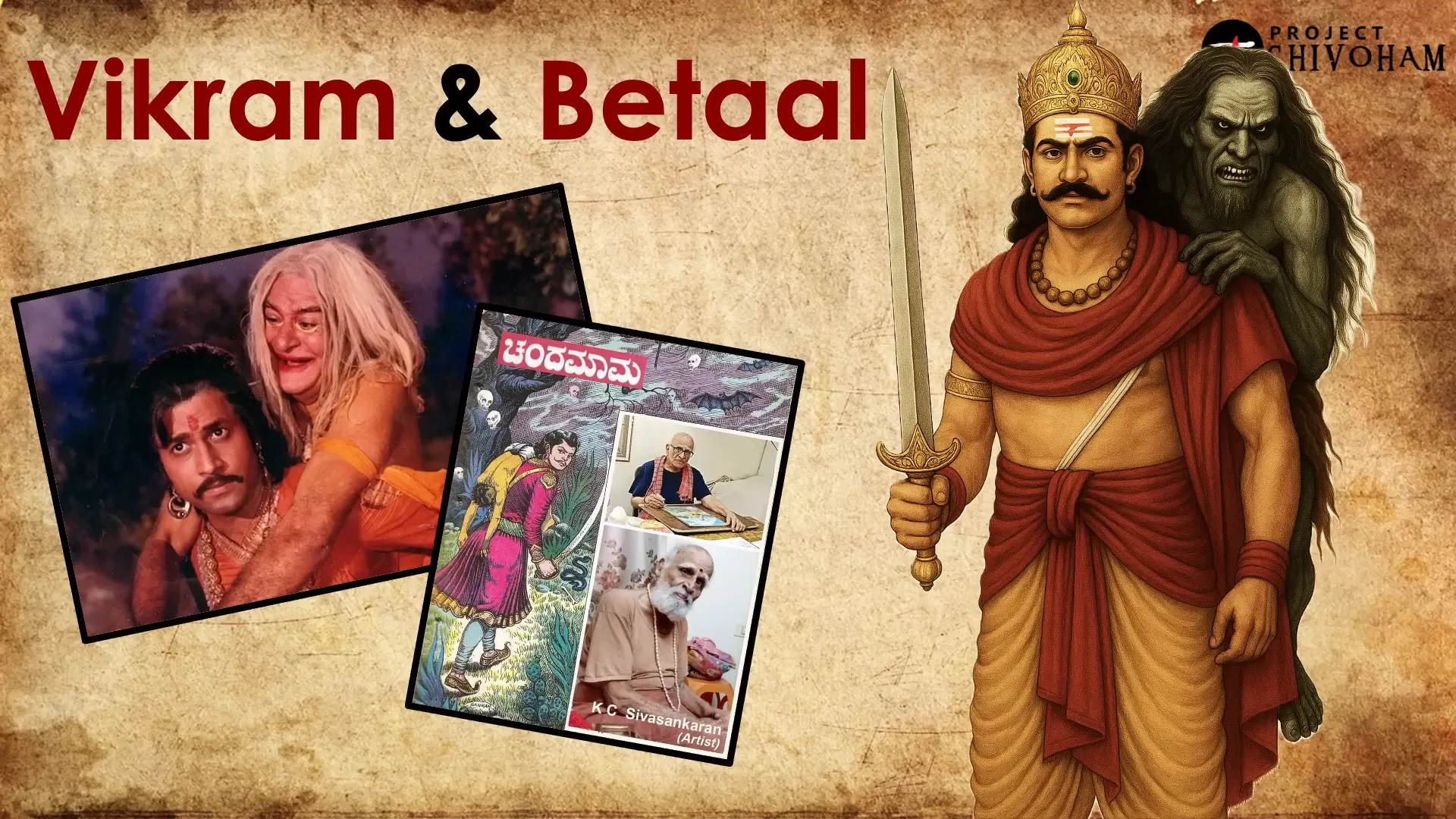
Table of Contents
- A Quick Recap: The Tale of Vikram and Betaal
- The Lost Language of Betaal’s Tales: Paisachi
- Who is Betaal? Unveiling His Origins
- Betaal as a Pisachi: The In-Between Being
- Betaal’s Role as a Guardian Deity
- The Philosophical Depth of Vikram and Betaal’s Tales
- Conclusion: The Enduring Legacy of Betaal
- Frequently Asked Questions (FAQ)
A Quick Recap: The Tale of Vikram and Betaal
The popular episodes of Vikram and Betaal are actually part of a much larger narrative involving King Vikramaditya, the tantric Batrughari, and numerous other characters. At the heart of this larger story lies a unique interaction: King Vikramaditya is tasked by a tantric to capture Betaal, a ghostly spirit who inhabits a tree.
Each time Vikramaditya carries Betaal, the spirit narrates a story imbued with a moral twist and poses a riddle. The king must answer correctly — but there’s a catch. If Vikramaditya remains silent despite knowing the answer, his head will burst and he will die. Yet if he speaks, Betaal escapes back to the tree, forcing the king to pursue him again. This cycle repeats twenty-five times, giving us the famous collection known as Betaal Panchavimshati, or “Betaal’s Twenty-Five Stories.”
These tales are far more than mere entertainment; they offer moral guidance and philosophical insights wrapped in engaging storytelling.
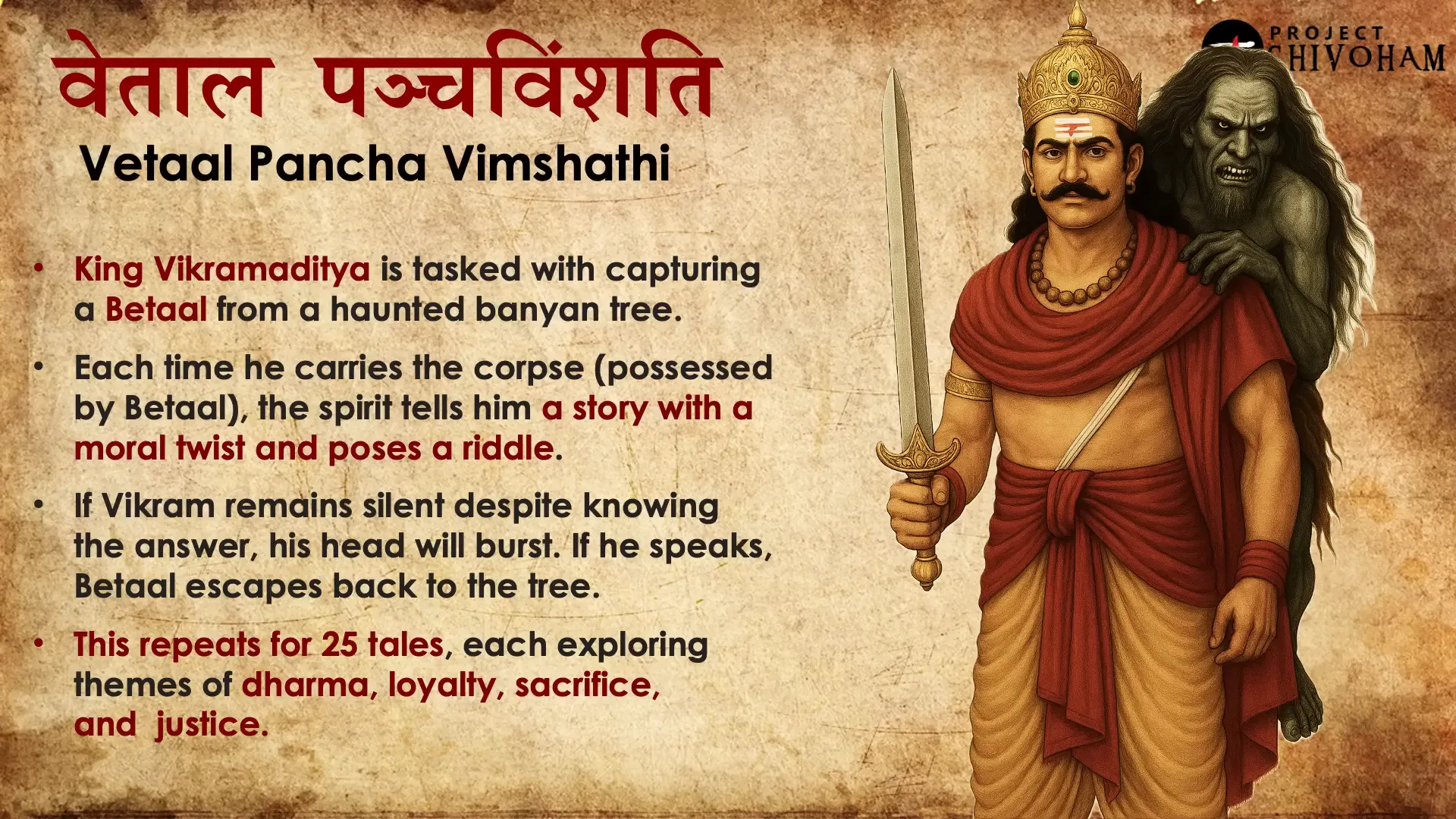
The Lost Language of Betaal’s Tales: Paisachi
One of the most intriguing aspects of Betaal’s stories is the language in which they were originally composed. While many of us know the Sanskrit versions, the original tales were first written in a nearly forgotten ancient Indian language called Paisachi (also spelled Pisachi), which translates loosely to “language of ghosts and devils.”
Contrary to popular assumptions, Paisachi was not a mythical or fictional tongue. It was a real language spoken in Bharat (ancient India) over two thousand years ago. Despite its eerie name, Paisachi was not the language of supernatural beings but a genuine linguistic tradition now lost to time.
Here’s what we know about Paisachi:
- It is classified as one of the most obscure Prakrit languages of ancient India, rooted in the Sauraseni tradition.
- It was never widely spoken as a vernacular but survived in oral lore, whispered tales, and nighttime storytelling.
- The only surviving linguistic source for Paisachi is a single page from Prakriti Prakasha, the oldest known grammar book on Prakrit languages written by the ancient scholar Vararuchi nearly 1,800 years ago.
- The first sutra in this grammar book begins simply with the word “Paisachi,” giving us a brief glimpse into the language before it fades into obscurity.
- Vararuchi notes that Paisachi is based on the Prakriti Sauraseni language, which is the ancestor of modern languages such as Punjabi, Gujarati, Rajasthani, and Western Hindi.
Unfortunately, no complete manuscripts of Paisachi survive today, and the language itself is considered extinct. However, scholars believe that with the grammar rules preserved by Vararuchi, it might be possible to reconstruct aspects of Paisachi in the future.
The fact that Betaal’s tales were originally penned in Paisachi opens exciting avenues for linguistic and historical research into India’s ancient cultural heritage.
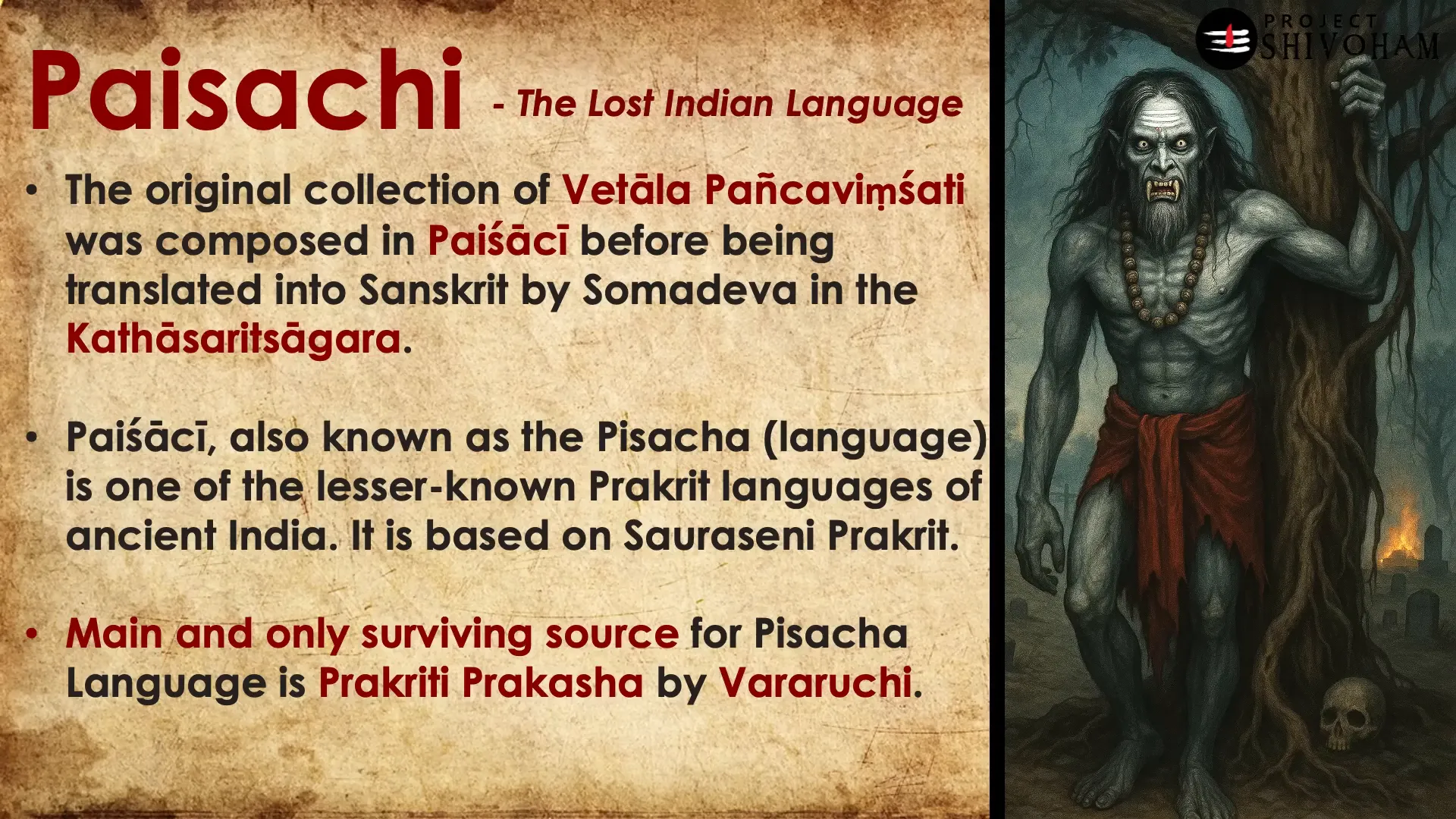
Who is Betaal? Unveiling His Origins
Now to the heart of the matter: who exactly is Betaal? The history of Betaal is elusive, scattered across mythology and faintly referenced in obscure scriptures. Although his riddles and stories have endured for centuries, Betaal’s true identity is often misunderstood or overlooked.
One significant clue comes from references to two Shivaganas (attendants of Lord Shiva) named Nandi and Mahakala. It’s important to note that this Nandi is not the sacred bull we commonly know, nor is Mahakala the divine form worshiped in the Mahakaleshwar temple of Ujjain. Instead, these are distinct attendants or servants of Shiva, akin to how Jaya and Vijaya serve Lord Vishnu.
According to the lore, Mahakala undergoes a mystical curse, condemning him to dwell in graveyards — a liminal space suspended between the living and the dead. This is not a punishment but a role: to serve as a vessel of wisdom. In this state, Mahakala becomes Betaal, tasked with disseminating knowledge through riddling stories that test the worthy.
King Vikramaditya becomes the destined recipient of Betaal’s wisdom, and thus begins the famous cycle of stories and riddles. Betaal is not a mere ghost or demon, nor a figment of imagination. He is a Shiva gana, a devoted servant of Lord Shiva, forced to cloak profound truths in mystery and paradox.
This origin story is referenced in texts like the Skanda Purana, which mention the eternal devotees of Shiva, Nandi and Mahakala, highlighting their unwavering affection and service to the deity.
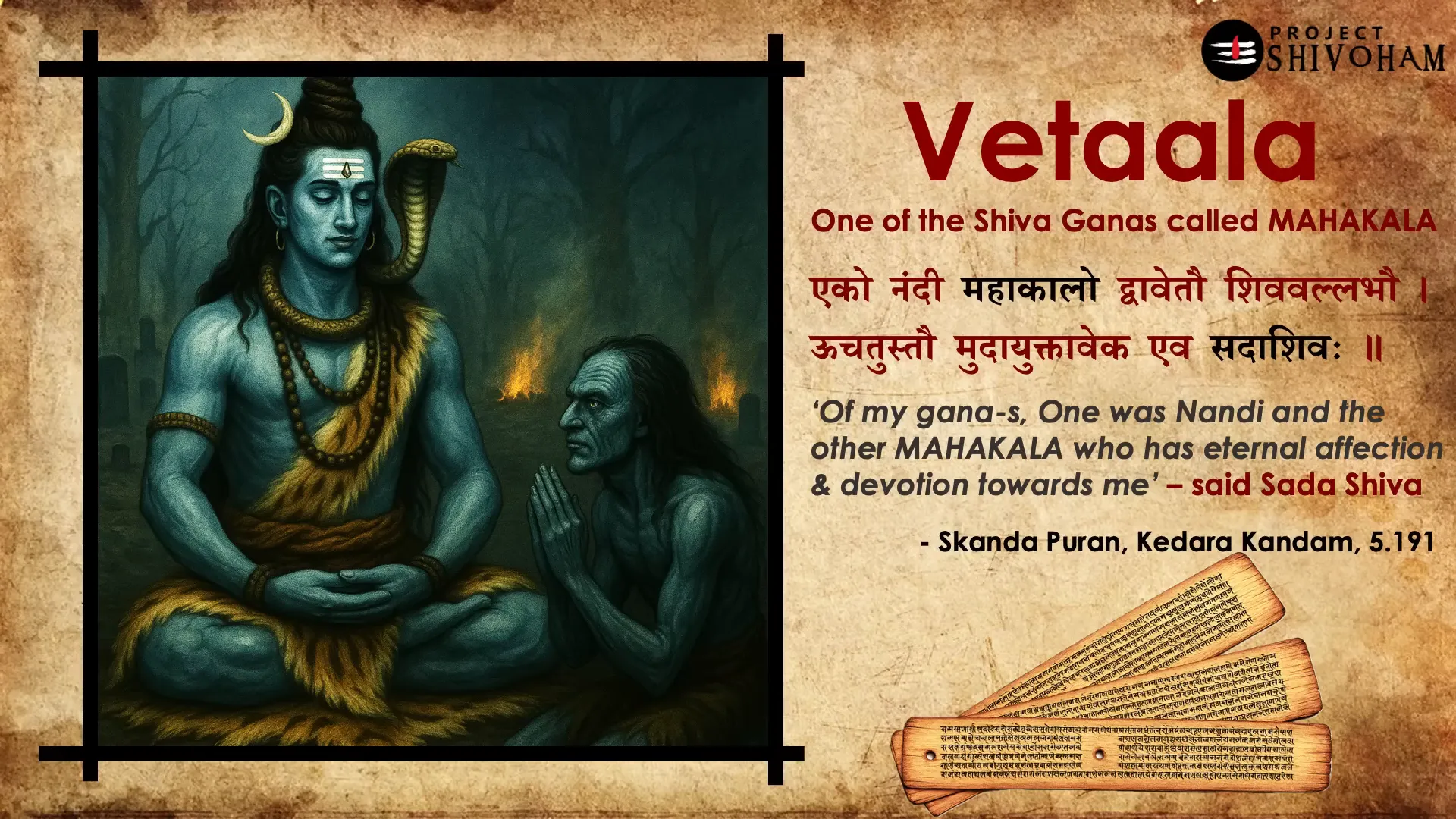
Betaal as a Pisachi: The In-Between Being
Betaal’s manifestation is closely tied to the concept of the Pisachi, a supernatural creature in Indian mystical lore that inhabits the realm between the living and the dead. This liminal space is neither here nor there — a threshold world where spirits dwell.
In this form, Betaal is more than a ghostly figure. He is a guardian of the boundary between worlds, a keeper of secrets and wisdom hidden in shadows. This explains his connection to graveyards, forests, and other liminal spaces, where he watches over the unseen and maintains cosmic balance.
Betaal’s Role as a Guardian Deity
Beyond folklore, Betaal holds a sacred place in many Shaivite traditions across India. In several regions, he is still revered as a guardian deity — protector of the land, keeper of liminal spaces, and watchful spirit who safeguards communities from unseen dangers.
Betaal’s worship is alive and vibrant, not just a memory of the past. Temples and rituals dedicated to Betaal exist in coastal Maharashtra (especially the Konkan region), Goa, and parts of northern Karnataka. Some notable temples include:
- Vetal Temple, Amona, Goa
- Vetaloba Temple, Maharashtra
- Sridev Vetaloba Temple, Aravalli, Maharashtra
In these places, Betaal is honored not out of fear, but out of faith — a belief that justice, protection, and wisdom can emerge even from beings dwelling in shadowy realms.
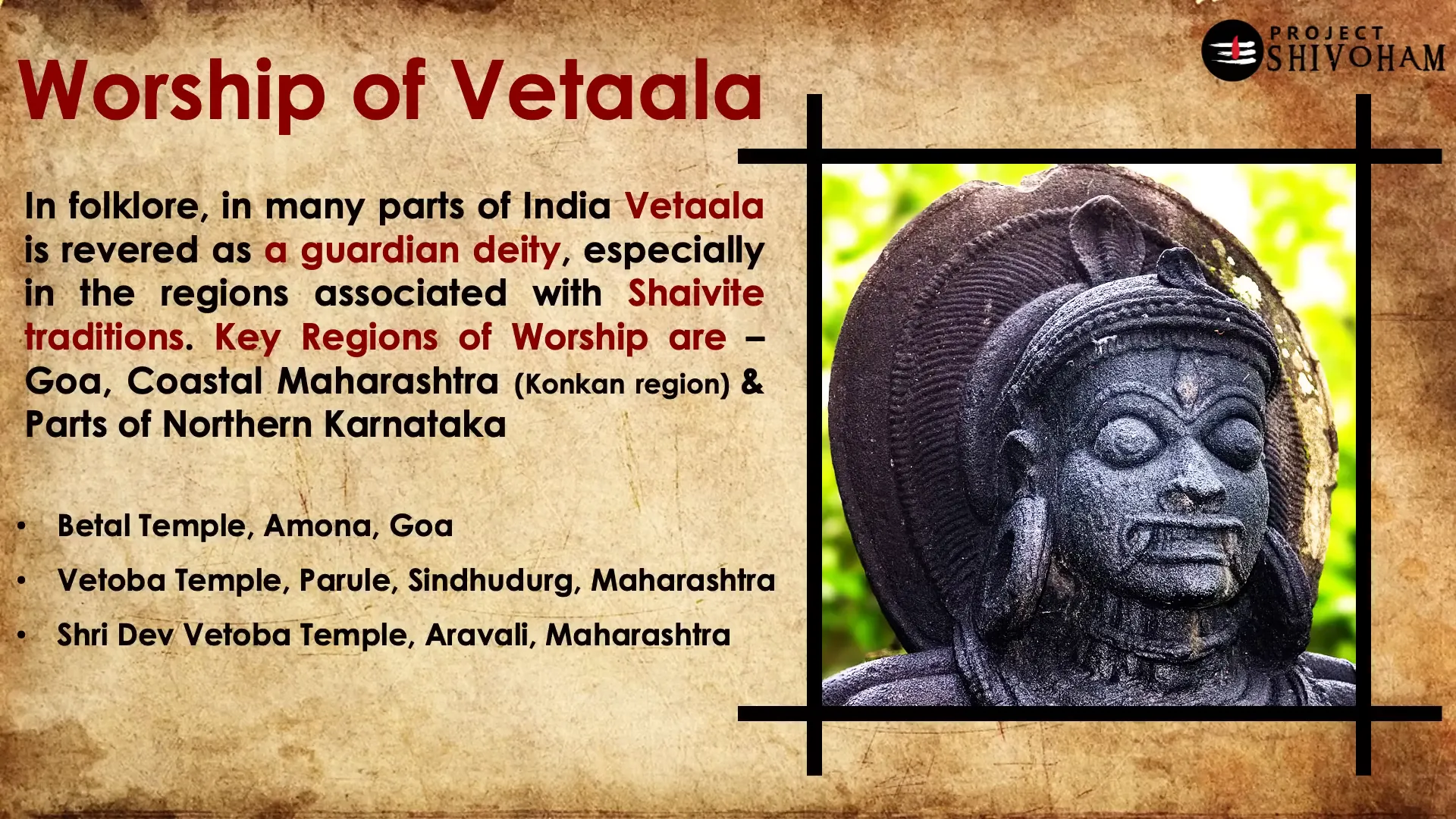
The Philosophical Depth of Vikram and Betaal’s Tales
While the stories often appear as supernatural riddles and ghostly encounters, a deeper reading reveals a profound philosophical journey. The interaction between Vikramaditya and Betaal across the twenty-five tales is a metaphor for life’s cyclical nature, moral challenges, and spiritual growth.
1. The Cyclical Structure: Life as a Loop of Karma
Each tale follows a repeating pattern: Betaal narrates a riddle, Vikramaditya answers correctly, and Betaal escapes — only for the cycle to begin anew. This repetition is no mere narrative device; it mirrors the cyclical nature of life itself, where actions, choices, and consequences loop endlessly through karma and rebirth.
Every story symbolizes a small life and death, a test of the king’s wisdom to choose rightly between right and wrong, life and death. This cyclical journey reflects the spiritual concept that growth comes through repeated trials and learning.
2. Progressive Challenge: The Evolution of Dharma
The riddles in Betaal’s tales grow increasingly complex and nuanced. Initially, Betaal tests Vikramaditya’s sense of justice, but as the stories progress, the moral dilemmas deepen, probing empathy, sacrifice, truth, and detachment.
Through these challenges, Vikramaditya is transformed from a mere king into a wise ruler who understands not only the letter of law but its spirit — the wisdom behind Dharma (righteousness or duty).
3. The Final Riddle: Silence as Wisdom
In the twenty-fifth and final tale, Vikramaditya does something unprecedented: he refuses to answer Betaal’s riddle. This silence is not weakness but a profound realization. The king understands that some truths need not be spoken, and sometimes silence holds greater power than words.
This act breaks the cycle of riddles and stories, symbolizing spiritual enlightenment — the ability to transcend dualities and know when to speak and when to remain silent.
4. Betaal as the Hidden Guru
Betaal is more than a ghost or a trickster. He is the guru in disguise, guiding Vikramaditya through spiritual trials and awakening him to higher consciousness. Each riddle is a test of Raja Dharma — how a ruler should think, judge, and lead with wisdom.
Through riddles, Betaal tests; through silence, he reveals. He channels the divine knowledge of Shiva, serving as a bridge between the mortal king and the cosmic wisdom.
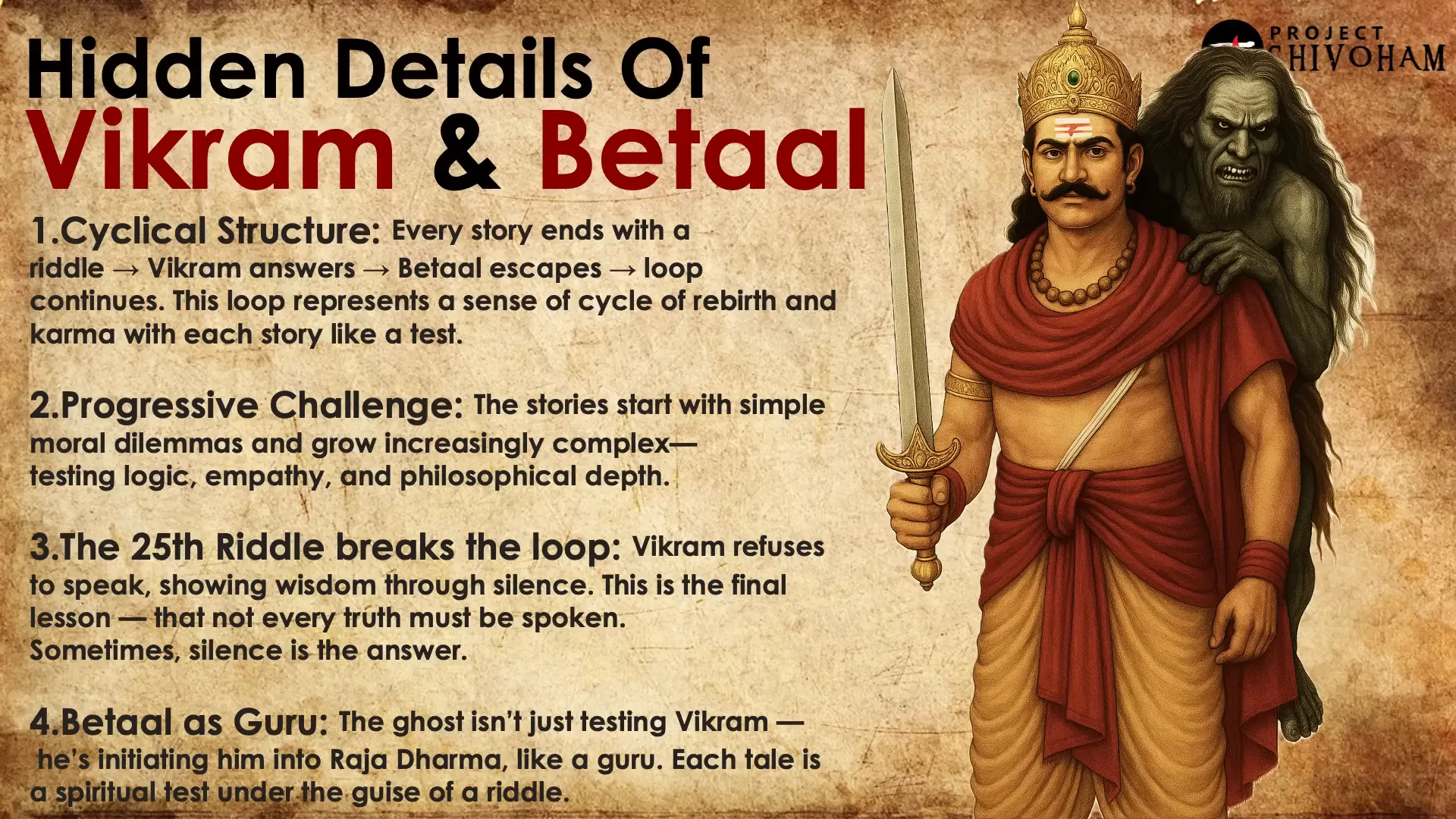
Conclusion: The Enduring Legacy of Betaal
Betaal is far more than a spooky figure from childhood stories. He is a complex symbol rooted in India’s ancient linguistic, mythological, and spiritual traditions. As a Shiva gana, cursed yet wise, Betaal embodies paradox — a being who dwells in graveyards not to haunt, but to enlighten.
The tales of Vikram and Betaal invite us to explore the cyclical nature of life, the evolution of moral understanding, and the power of silence and wisdom. They remind us that knowledge often comes wrapped in mystery, and the path to enlightenment is paved with questions, riddles, and challenges.
Today, Betaal continues to be worshipped as a guardian deity, a protector of liminal spaces, and a symbol of the profound spiritual heritage of Bharat. His stories, language, and legacy open new horizons for understanding India’s rich cultural tapestry.
So next time you recall the ghostly Betaal, remember: behind the tales lies an ancient wisdom, waiting to be rediscovered.
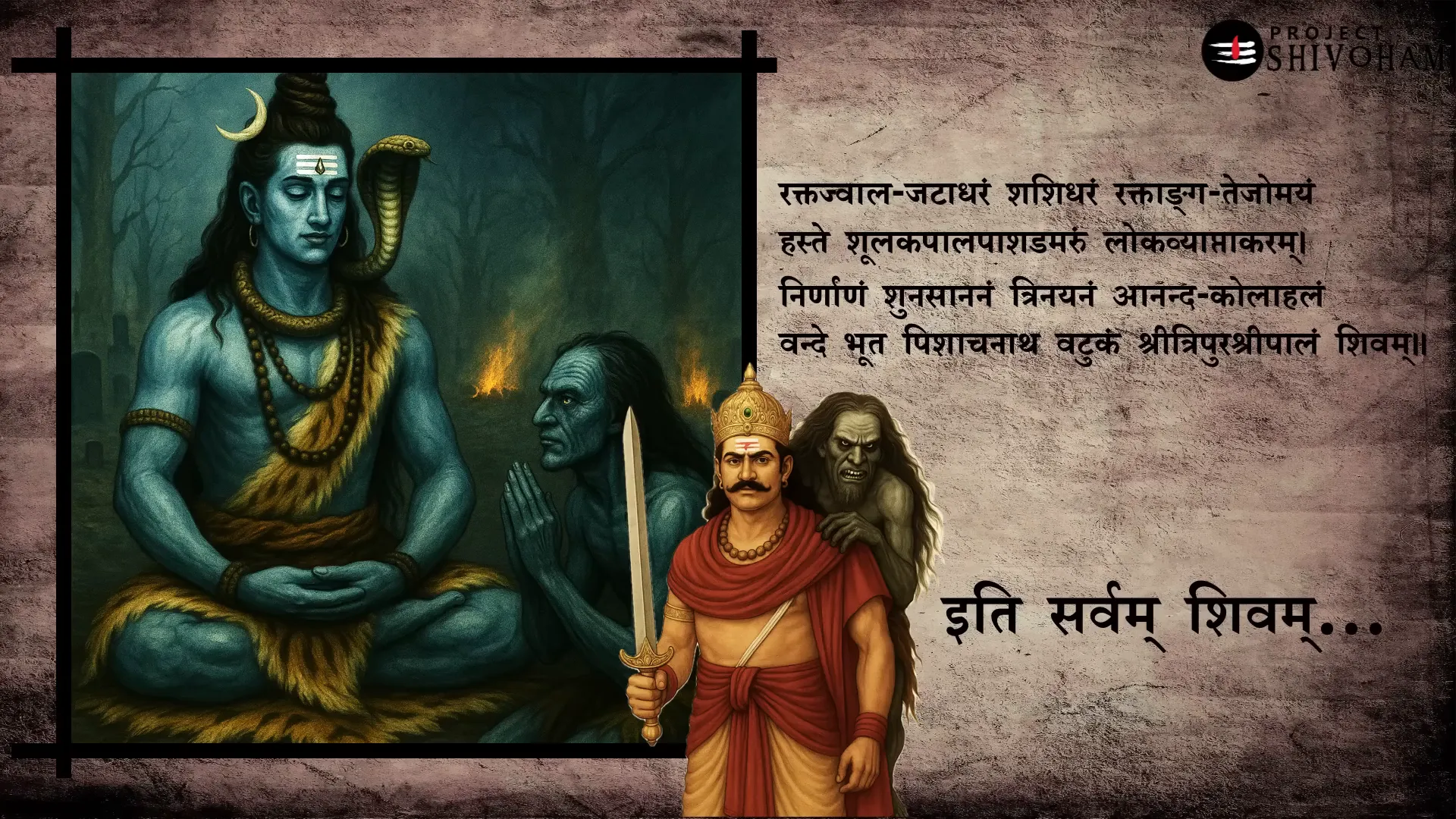
Frequently Asked Questions (FAQ)
Who is Betaal in Indian mythology?
Betaal is a Shiva gana (attendant of Lord Shiva) who, according to legend, was cursed to dwell in graveyards and liminal spaces. He appears in the form of a Pisachi — a spirit between the living and the dead — and is known for narrating riddling stories to King Vikramaditya to test his wisdom and dharma.
What is the language Paisachi and why is it important?
Paisachi is an ancient, now nearly extinct Indian language in which the original Betaal Panchavimshati (twenty-five tales of Betaal) were composed. It is a Prakrit language rooted in the Sauraseni tradition and is considered the “language of ghosts and devils,” though it was a real language used over two thousand years ago. Paisachi’s study offers valuable insight into India’s linguistic history.
Why does Betaal tell riddles to King Vikramaditya?
Betaal tells riddles to test the king’s wisdom, moral judgment, and understanding of dharma. Each riddle presents a moral dilemma or philosophical question that challenges Vikramaditya’s sense of justice, empathy, truth, and detachment. This interaction is a spiritual journey for the king’s growth as a wise and just ruler.
What is the significance of the twenty-five tales?
The twenty-five tales symbolize the cyclical nature of life, karma, and rebirth. They represent repeated tests of moral and spiritual understanding, culminating in the final tale where silence signifies the highest wisdom. The cycle breaking reflects enlightenment and the transcendence of worldly dualities.
Is Betaal worshipped today?
Yes, Betaal is worshipped as a guardian deity in parts of India, especially in coastal Maharashtra, Goa, and northern Karnataka. Temples dedicated to Betaal exist where he is revered as a protector of communities and liminal spaces, embodying divine justice and wisdom.
What is the deeper philosophical meaning behind Betaal?
Betaal represents the liminal force that exists on the edge of the material and metaphysical realms. He is a symbol of paradox, mystery, and wisdom. Through his stories and riddles, he guides spiritual growth, teaching that true wisdom often lies beyond straightforward answers, and sometimes silence is the greatest answer of all.
This article was created from the video Who is BETAAL? with the help of AI. Thanks to Aravind Markandeya, Project Shivoham.